Trending
Opinion: How will Project 2025 impact game developers?
The Heritage Foundation's manifesto for the possible next administration could do great harm to many, including large portions of the game development community.

Featured Blog | This community-written post highlights the best of what the game industry has to offer. Read more like it on the Game Developer Blogs or learn how to Submit Your Own Blog Post
Realism is attractive but can get banal very quickly. It is where art deviates from reality that we can be moved by it.

When creating a videogame independently with a fraction of the budget of the blockbusters, a major concern is always how your game will look and compare to those popular games. There's a sort of arms race going on in commercial videogames where big companies try to outdo each other in terms of aesthetics. They continue to up the ante in realism, detail, spectacle, and so on. As an independent developer you can only really stare at that with open mouth in utter awe. This must be how people in Antwerp must have felt like when they first saw Rubens' work. Or here in Ghent when they encountered the Van Eyck altar piece in Saint Bavo's cathedral.
The popular solution to the impossibility of competing with that stuff (simply because indies don't have that kind of money) is to go retro. Making your game look old on purpose is a huge time saver and taps into the audience's nostalgia. This would have been an interesting area to explore for Sunset, especially given that Sunset is set in the year that Pong was released: 1972. But we decided against that.
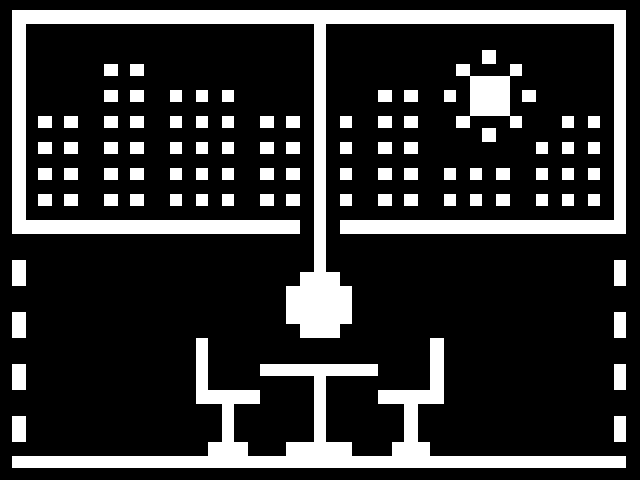 Sunset: The videogame, in 1972.
Sunset: The videogame, in 1972.
The thing is, we absolutely adore Rubens and Van Eyck. And this sort of aesthetics is what drew us to videogames in the first place. We want to make art with places that you can visit and characters you can relate to. We want to feel the lushness of the environment and immerse ourselves in the atmosphere. But could we afford it?
After paying close attention to our own reactions to aesthetics in videogames and reading about those of others, we discovered something remarkable. For all the effort put into realism, paradoxically it seems that to closer a game gets to it, the less players care about it.
When you think about it, it makes sense. We play videogames to surround ourselves with an imaginary world, to basically get away from reality for a while. So when a game starts looking like that reality, we tend to ignore it. At the initial first encounter, there we may go "wow". But a few realistic trash cans and true-to life palm trees later, we tend to stop feeling so impressed.
I'm not going to argue that the effort was wasted. The effect of that initial wow-factor is not to be underestimated. But this observation did seem to offer us, underfunded indies, an opportunity.
It wasn't just practical reasons that drove us to stylization in Sunset. Conceptually, realism is easy. This is probably one of the reasons why it's so ubiquitous in a field where technology dominates. Copying what you see is a straightforward idea and offers a clear goal to compare your efforts to. When done literally, there's no artistically creative thinking required.
But, as noted above, absolute realism is also absolutely dull. We are human, we like to feel connected to other humans. When we look at a picture, we like to notice the presence of its creator, if ever so subtly. We enjoy noticing how the artist solved a certain presentation problem. Maybe because it tells us something about the person who made the picture, or about what they were trying to evoke. Or simply because it reminds us that the image was created by a human like ourselves, not a machine.
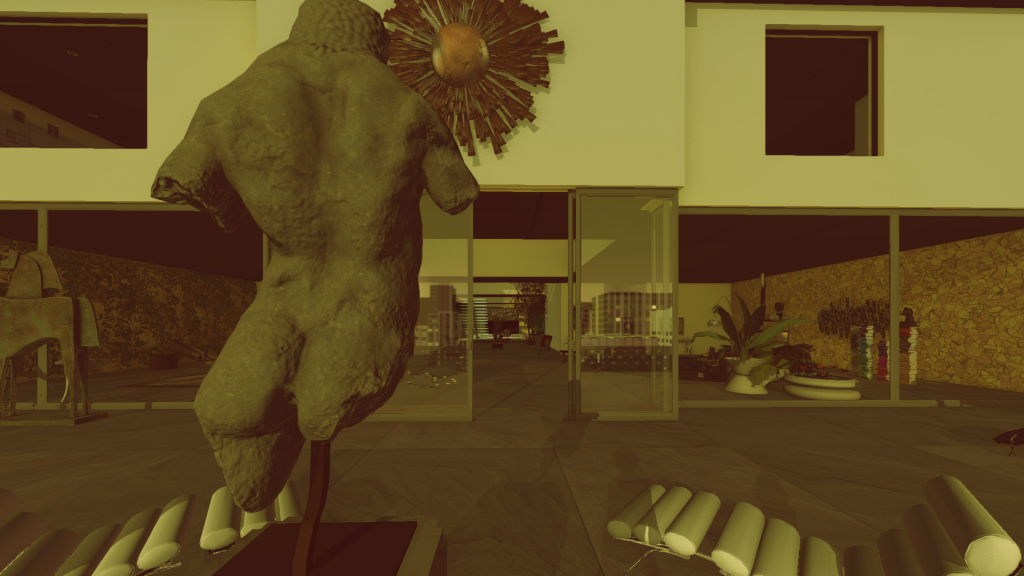 As classicists we can appreciate the inclination towards realistic figuration in videogames.
As classicists we can appreciate the inclination towards realistic figuration in videogames.
I have this theory, somewhat derived from something that Raph Koster said in Theory of Fun, that art happens exactly where realism is lacking. It is where a picture deviates from reality that the art expresses something, that the cosmic divine is allowed to peak through.
This doesn't mean that completely unreal images immediately have a better effect. The tension between the abstract and the real seems to be pivotal. I deeply enjoy being fooled into thinking something looks real only to find out on closer inspection that it isn't at all. Especially when the abstraction is meaningful in some way.
A realistically modeled object is easily identified and ignored. But something that doesn't look quite real invites investigation. If only because our mind wonders "Why can't I ignore that thing?"
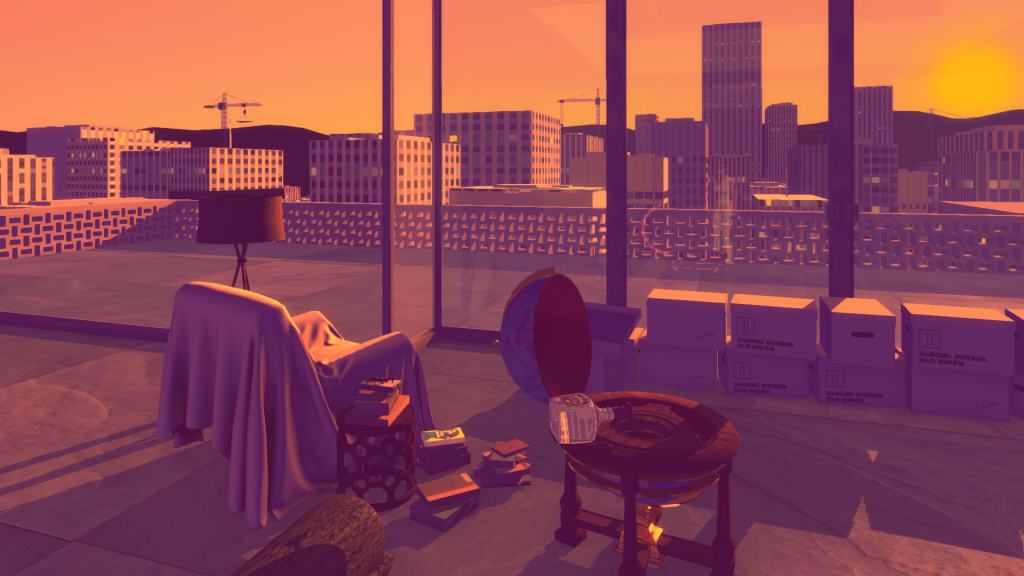 Actual sunset doesn't look anything like this. But somehow to us this feels like sunset.
Actual sunset doesn't look anything like this. But somehow to us this feels like sunset.
One of the tricks we use to pull Sunset away from realism is the exaggerated effect of the setting sun. Realistically speaking, when the sun sets its light diminishes and the effect of light from the sky increases. As a result, the world tends to look more bland and blue at sunset. But in our game it looks saturated and orange. Yet any human totally reads it as "setting sun" because it's the color of the sun itself.
Another style choice is something we've developed over years of creating semi-realistic looking games on a budget. Based on something Fumito Ueda once said about Ico, we try to focus our efforts on the elements that are important, while leaving the others very simple, almost symbolic. This approach meshed really well with the particular seventies style that inspired us with its simple modernist architecture contrasted by detailed artworks and antiques.
A side effect of deviating from reality is that photographs look really weird in our world. And there's lots of family photos of Ortega, and newspapers and magazines. So Auriea developed a style of fudging with photographic collages, halftone effects, and drawings that makes the pictures still read as photographs but look like they belong in our stylized apartment.
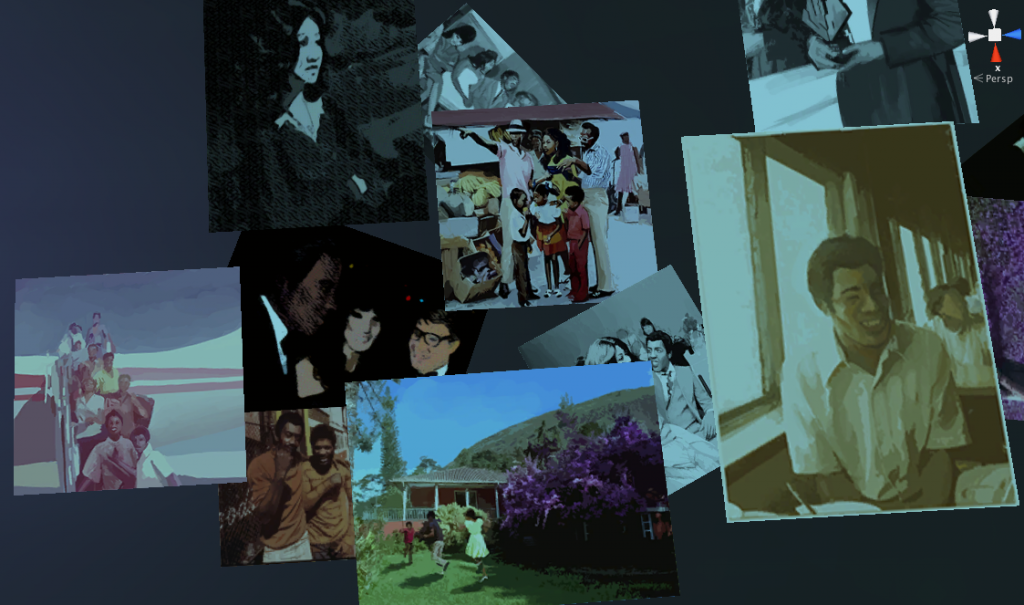 Collaborating with game artist Lucie Viatge, we came up with styles, which give the feel of photos from a distance, while up close are more painterly.
Collaborating with game artist Lucie Viatge, we came up with styles, which give the feel of photos from a distance, while up close are more painterly.
This is at the heart of our aesthetic motivation: things should feel real, but don't have to look real. And in a medium where images are produced synthetically, not photographically, stylization tends to contribute to feeling real. I think this is because stylization is always subjective and as such an artist can guide the viewer to a place where they think the emotion happens.
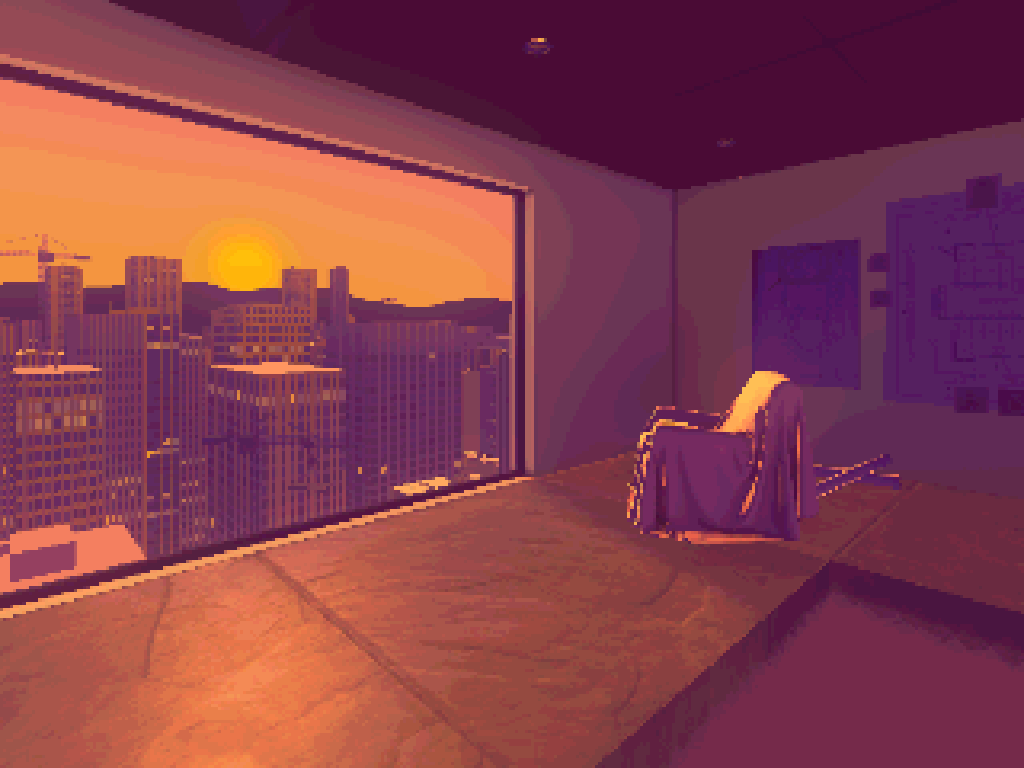 Screenshot taken in Sunset's MIN mode.
Screenshot taken in Sunset's MIN mode.
An extreme example of stylization is Sunset's minimum quality mode. It was created to allow the game to be run on computers without proper graphics processor (ie those pesky integrated things that can only run 3D in theory). By leaving out the shadows and the reflections, the animated character and most of the image effects, we got pretty good performance but the game looked rather bland. So we added a pixellated and slightly posterized effect to that mode. It looks a lot better in our opinion. And as a bonus, it seems to be easier on the stomach of those sensitive to motion sickness in first person.
Sunset is modeled with mostly realistic proportions, give or take a bit of exaggeration for the sake of realtime 3D videogame presentation. We use reflections, and shadows and shiny materials that have a somewhat realistic effect. But we try to steer clear of anything looking too real. Which, ironically, doesn't come easy with engines and shaders and scripts mostly created for the purpose of realistic depiction.
But through simplified shapes, generated textures and the extreme lighting conditions that the setting sun allows for, I am quite pleased with how the look of Sunset deviates from reality. And it is precisely the "how" that matters! I hope this means that some art will come out in the process. But that will be your call.
— Michaël Samyn.
You May Also Like